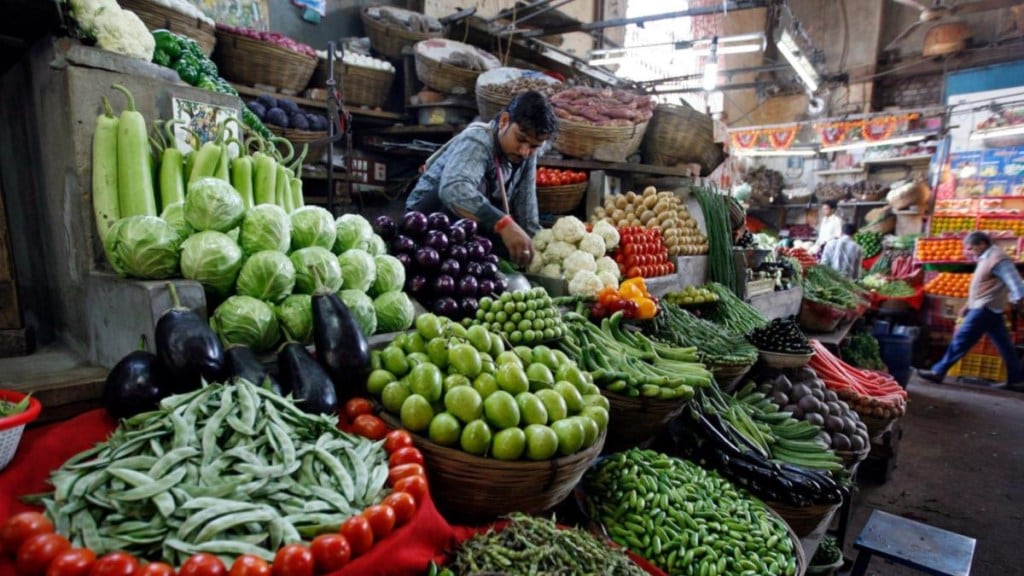The livelihoods of millions of farmers in India may be impacted due to heat waves as the world is likely to witness record-high temperatures during 2024-2028, the World Meteorological Organisation (WMO) has stated in its Global Annual to Decadal Climate Update. Sandip Das explains the potential impact on Indian agriculture
1. WMO’s forecast on temperature trends till 2028
The global weather body has stated there is an 80% chance that global mean near-surface temperature will exceed 1.5°C above the 1850-1900 average levels for at least one year between 2024 and 2028. There is a 47% chance that the five-year mean will exceed this threshold. “It is likely (86% chance) that at least one year between 2024 and 2028 will be warmer than the warmest year on record (currently 2023). The chance of the five-year mean for 2024-2028 being higher than the last five years (2019-2023) is also likely (90%),” the WMO has cautioned in its report. Near-surface temperatures in 2023 showed conditions that were mainly warmer than the long-term average, with a warmer tropical East Pacific, consistent with El Niño conditions, which prevailed in 2023. The eastern north Atlantic Ocean had record surface temperatures along with southern Europe.
2 Observations on frequent El Nino events during 2019-2023
Near-surface temperatures in 2023 showed conditions that were mainly warmer than the long-term average, with a warmer tropical east Pacific, consistent with El Niño conditions (which adversely impacts monsoon rains in India), which prevailed for most of the last year. Correspondingly in 2023, the southwest monsoon (June-September) was not only the weakest in five years, but was also marked by uneven distribution. In August, the rainfall was the lowest since 1902 at only 64% of the benchmark long period average.
The eastern North Atlantic had record surface temperatures along with southern Europe.Over 2019-2023, the observed temperature was warmer than the baseline across the globe except in the eastern tropical Pacific and parts of Canada, Australia and India. During the same period, parts of Asia were wetter than average.
3 Warming of earth’s temperature and its consequences
The WMO has confirmed that 2023 was the warmest year on record, with the global average near-surface temperature at 1.45-degree Celsius (with a margin of uncertainty of ± 0.12 °C) above the pre-industrial baseline. It was the warmest ten-year period on record. Heatwaves, floods, droughts, wildfires and rapidly intensifying tropical cyclones caused misery and mayhem, upending every-day life for millions and inflicting many billions of dollars in economic losses, WMO State of the Global Climate Report 2023 stated. Tropical Cyclone Mocha, in May, was one of the most intense cyclones ever observed in the Bay of Bengal and triggered 1.7 million displacements across the sub-region from Sri Lanka to Myanmar and through India and Bangladesh, and worsened acute food insecurity, according to the report.
3 Impact of extreme weather events on agriculture in India
Attributed to several weather events — unseasonable rains, uneven distributions of monsoon and prolonged heat waves in the last few years in production of several crops – rice, wheat, pulses and oilseeds – were adversely impacted last year. Due to surplus rainfall in July 2023, vegetable production in key growing areas of the hilly states of Himachal Pradesh and Uttarakhand were hit, leading to a spike in tomato prices across the country. Unseasonal rains in March last year just prior to harvesting of wheat crops, hit the yield. In 2022, the heat wave (temperature around 35 C in pockets of northern India) in March – coinciding with the flowering stage of the crop — resulted in shrivelled grains leading to yield loss. India is the second largest wheat producer in the world, and had to impose a ban on wheat exports to build stocks for the domestic market.
4 Steps to make agriculture climate resilient
According to the Indian Council for Agricultural Research (ICAR), average maximum temperature of more than 30°C during the grain filling stage of the wheat crop adversely affects plant growth and for every 1-degree rise in temperature above this, there is a 3-4% drop in wheat yield. Keeping in mind the terminal heat problem that wheat farmers faced last year, the government worked with farmers to ensure that climate resilient varieties were sown by farmers in more than 60% of the total sown area of 34 million hectare this year. ICAR has released 1,956 high yielding stress tolerant varieties and hybrids of field crops – cereals, oilseeds, pulses and other crops of which 1622 are climate resilient. ICAR has developed 45 models for climate resilient integrated farming systems. Climate resilient villages have been developed, one in each of 151 districts under the project ‘National Innovations in Climate Resilient Agriculture’. Gievn the WMO forecast, India will need to focus more on climate resilient farming strategies.
Data points:
80% chance global surface temperature will exceed 1.5°C over at least one year during 2024-2028.
During 2019-2023, apart from the eastern tropical Pacific and parts of Canada, Australia and India, observed temperature was warmer than the baseline
Every 1°C rise in temperature beyond 30°C during grain filling period reduces wheat yield by 3-4%

